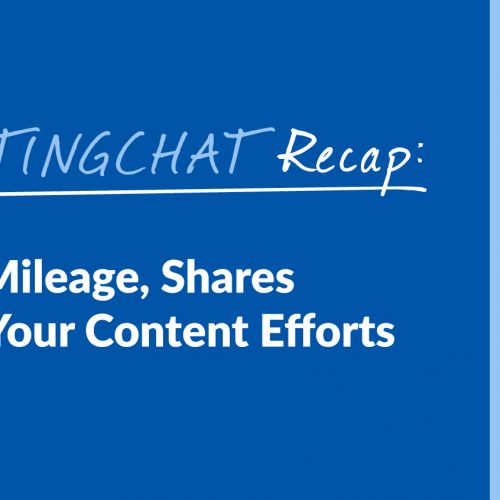How Creating a Holiday Content Marketing Strategy Helps Your Business
The holiday season is a special time of year. Many of us spend time with friends and family, give thanks for the things we have, and share gifts with our loved ones. But when you run a business, the holiday season is likely the busiest time of the year for you. Planning in advance and creating a holiday content marketing strategy can help take some of the stress out of the holiday season for your business. Quality holiday content marketing can help you connect with your audience, appeal to new customers, and increase your brand awareness. If you are unsure where to begin with your holiday content, this guide can help you get started. What Are the Benefits of Having a Holiday Content Marketing Strategy? If you’ve never put together a holiday content strategy or tracked the analytics of your holiday content, you might not realize that there are a number of benefits for your business. Here are a few: 1. Increases Demand for Your Products and Services Consumers spend more during the holiday season than any other time of year. This naturally leads to an increased demand for products and services. With consumers in an active buying stage, this is an ideal time to roll out time-sensitive offers. These deals also work well with Black Friday and Cyber Monday promotions and give customers an increased sense of urgency or a fear of missing out (FOMO). With the right holiday content marketing strategy, you can showcase high-value products and cater to customers who are ready to buy or could be ready more quickly. 2. Improves Brand Awareness With clever, memorable content during the holidays, you can give your brand awareness a boost. By creating customer-focused, engaging content for each holiday between Halloween and New Year’s Day, you can find a new target audience and build your loyal following. 3. Unleashes Your Creativity Customers respond best to creative, relatable content. The holiday season is the perfect time of year to show off the more personable side of your business. This type of content presents the chance to add some fun to your brand image. While you might not use this relaxed type of content any other time of year, the holidays give you more freedom to try new strategies and new content types. The addition of personality may earn you new customers and brand fans. So, don’t be afraid to take some risks. With so much holiday content out there, you don’t want to get lost in uninspired content. 4. Grows Your Business With a creative holiday content marketing strategy, you can potentially attract and retain new customers. This makes the holiday season the ideal time for business growth. In addition, keep an eye on the performance of your content during the holiday season and then implement some of the strategies that perform well in other parts of the year. This will be especially important if you discover a new strategy for your content. 5. Offers Opportunities for New Product Launches The holiday season gives many businesses the unique opportunity to release new products and services. That’s why you’ll often see big tech innovations come out near the holidays. Plus, many consumers enjoy holiday-themed products. If this is something your business can offer, consider releasing some limited-time products. Promote these new products on social media and through your other holiday content. Customers who are drawn in by your fresh products might be enticed to stay and buy other non-holiday products. You’ll find this is true if the new product performs well for them. 12 Content Marketing Strategies to Try During the Holiday Season Since most folks celebrate something during the winter holiday season, not having a content strategy for the holidays really isn’t an option. Take advantage of the buzz and popularity with a few different strategies. Here are 12 specific actions you can take to improve your holiday-themed content. 1. Start Early You might still feel the lingering heat of the summer, even if the leaves have already started changing color. No matter what season it is, you can never start planning too early for your holiday content. Do some market research to see what people are interested in this year, check out your competition’s content, you can even start planting hints of your upcoming content months in advance. It’s important to carve out plenty of time to craft creative, engaging content that will help you stand out from your competition, especially if your sales pick up in Q4. 2. Capitalize on Black Friday and Cyber Monday Consumers and businesses have long been conditioned to expect great deals and compelling offers during the holiday season. If it’s difficult for you to give customers a significant discount, think of a way to add value to your products or services. For example, if you are a B2B business, you could offer a free consultation with the purchase of a corresponding service. Use the first tip and start teasing your Black Friday/Cyber Monday offers in advance through email marketing. This will build anticipation. Then make your deal even more enticing by offering it for a limited time. It’s a great idea to include a countdown timer on the offer page to increase the FOMO. You could even take the opposite route like outdoor brand REI did with its #OptOutside campaign. It closed all its stores on Black Friday and encouraged people to head outside. Even though it was a controversial choice, it got people talking about the brand and made them a little more human. 3. Be Inclusive While the holiday season is packed full of traditions, you should consider moving beyond the norm to be more inclusive with your content. Many customers will quickly turn away from a brand if they feel its messaging excludes certain groups. Target did a great job of creating inclusive content with its 2021 holiday ad. To be more inclusive with your holiday content, consider: Staying neutral: Instead of focusing on and naming specific holidays, focus your … Read more









